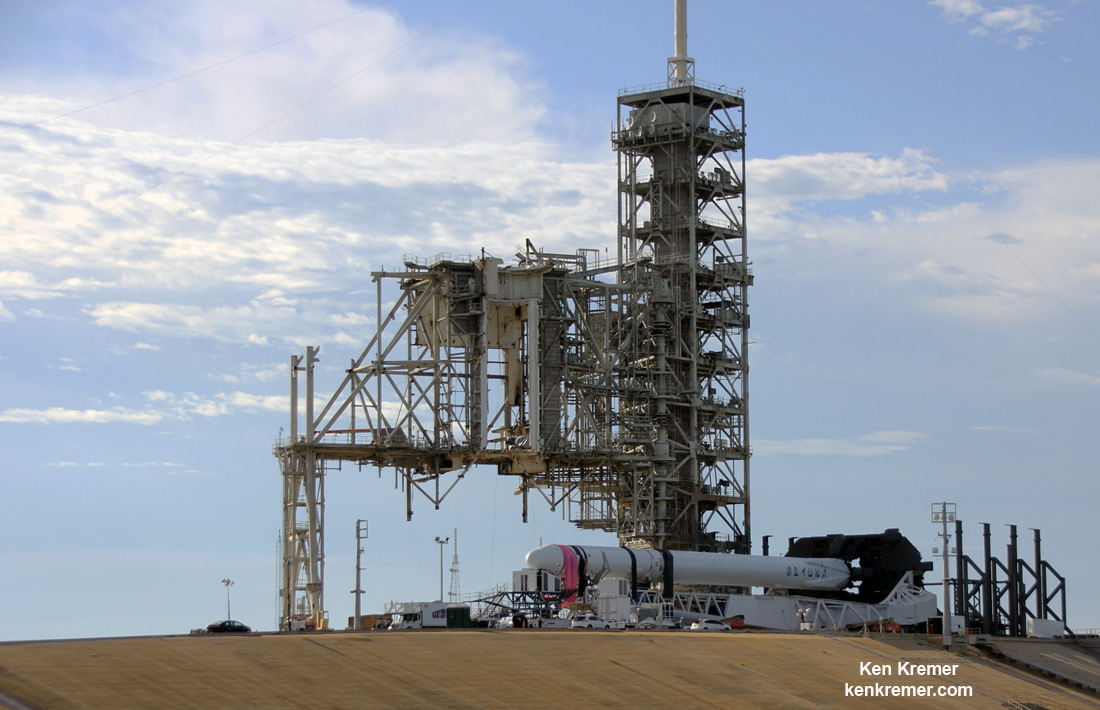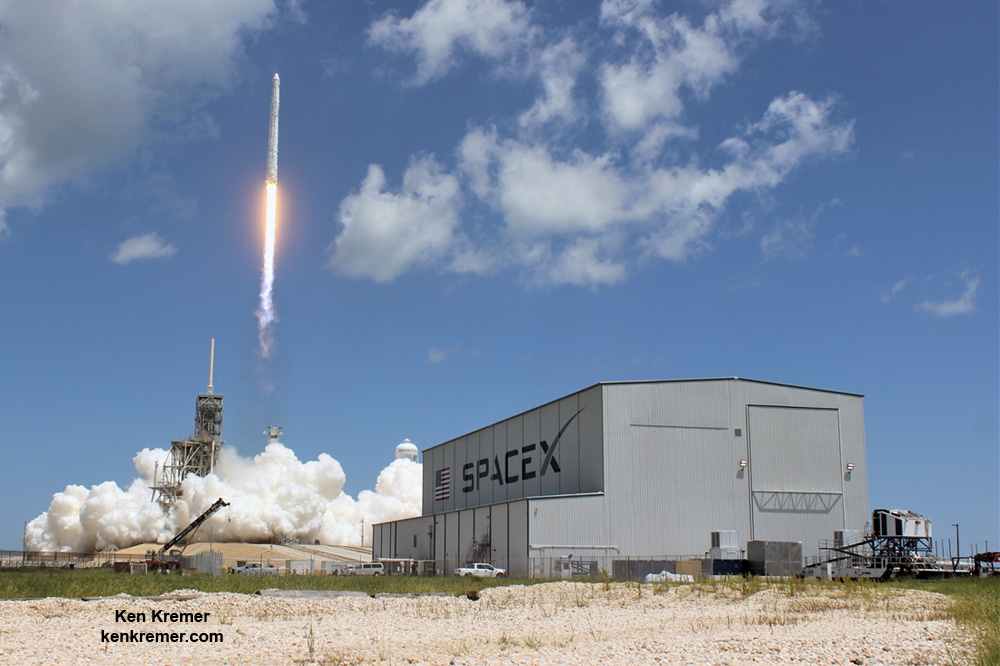
KENNEDY SPACE CENTER, FL – Todays (Aug. 14) stunning SpaceX Space Station cargo delivery blastoff to the International Space Station (ISS) and flawless first stage landing from the Kennedy Space Center and Cape Canaveral Air Force Station in the Sunshine State kicked off a rapid fire sequence of liftoffs planned for mid August.
All 9 SpaceX Falcon 9 Merlin 1D first stage engines ignited precisely on time from seaside pad 39A at NASA’s Kennedy Space Center in Florida today (Aug. 14) at 12:31 p.m. EDT (1631 GMT).
“It was a gorgeous day and a specular launch,” said Dan Hartman, NASA deputy manager of the International Space Station Program, at the post launch briefing at the Kennedy Space Center press site.
The 9 Merlin 1D’s of the two stage 213-foot-tall (65-meter-tall) Falcon 9 generate 1.7 million pounds of liftoff thrust fueled by liquid oxygen and RP-1 propellants.
“Just greatness to report about the launch,” said Hans Koenigsmann, SpaceX vice president of Flight and Build Reliability at the post launch briefing.
“The second stage deployed Dragon to a near perfect orbit. The first stage was successful and made a perfect landing. From what I’ve heard, it’s right on the bullseye and made a very soft touchdown, so it’s a great pre-flown booster ready to go for the next time.”
So its 1 down and 2 launches to go along the Florida Space Coast over the next 11 days of manmade wonder – Plus a Total Solar ‘Eclipse Across America’ natural wonder sandwiched in between !!
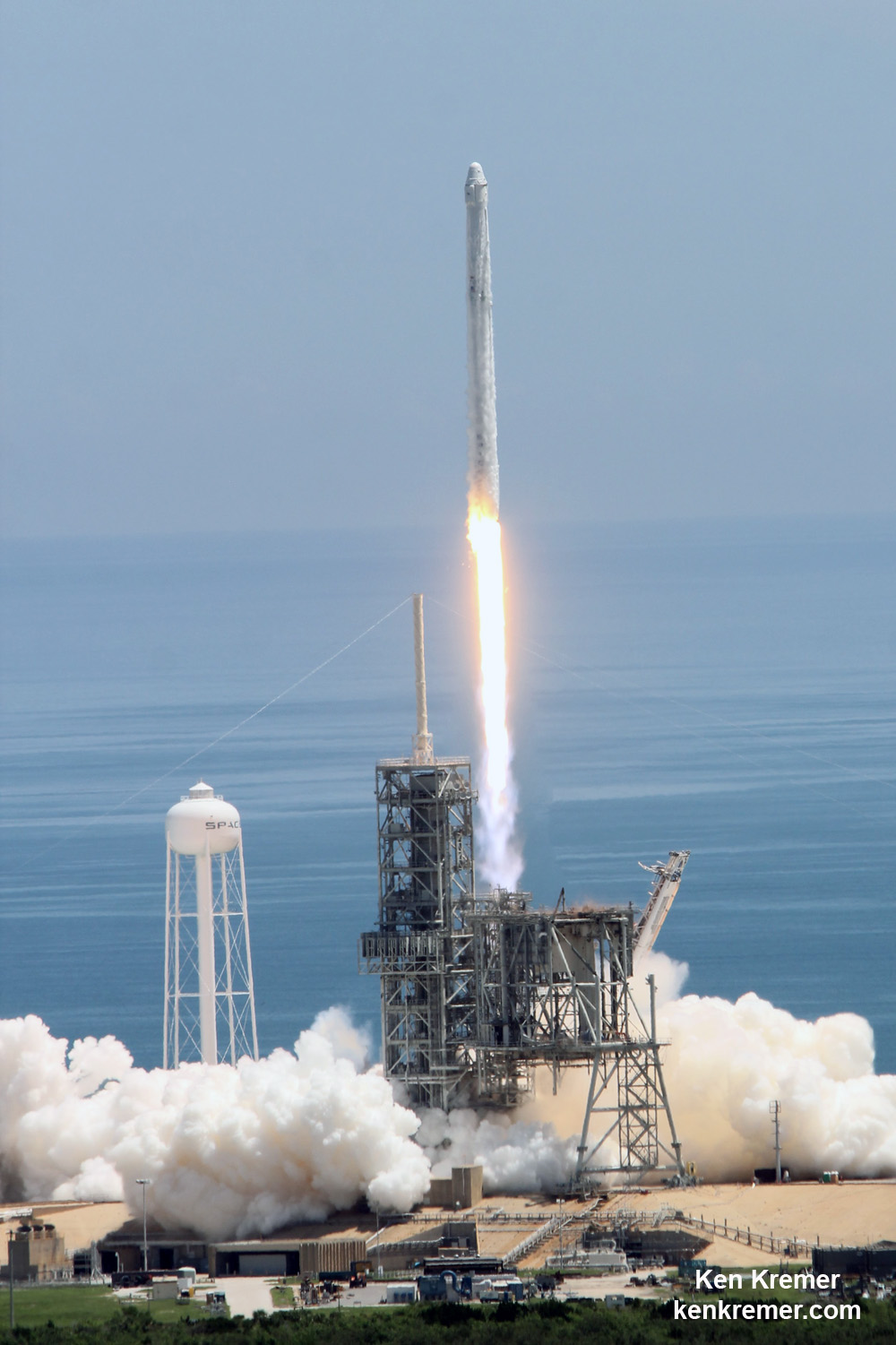
Monday’s picture perfect lunchtime liftoff of the unmanned SpaceX CRS-12 Dragon cargo freighter bound for the ISS and loaded with over 3 tons of science, research hardware and supplies including a hefty cosmic ray detector named ISS-CREAM, medical research experiments dealing with Parkinson’s disease, lung and heart tissue, vegetable seeds, dozens of mice and much more – came off without a hitch.
“We’re excited that about three quarters of the payload aboard is science,” noted Hartman. “With the internal and external payloads that we have going up, it sets a new bar for the amount of research that we’ve been able to get on this flight.”
And all 6 astronauts and cosmonauts serving aboard the station are especially looking forward to unpacking and serving up a specially cooled and hefty stash of delicious ice cream!
The ice cream, medical experiments and mice were all part of the late load items added the evening before liftoff – work that was delayed due to thunderstorms and completed just in time to avoid a launch delay.
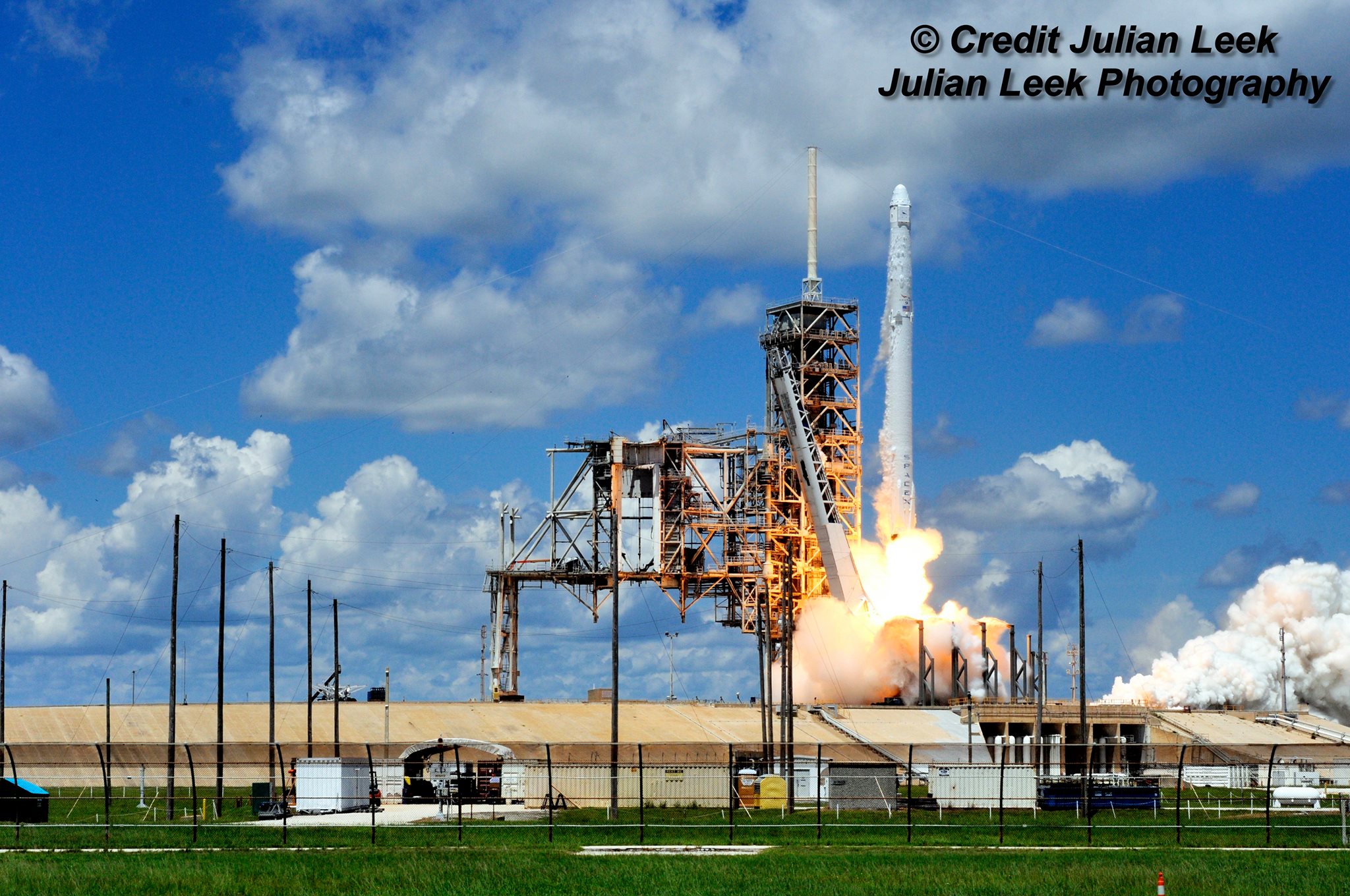
A huge crowd of delighted locals, tourists and folks flocking in from around the globe, packed local beaches, causeways and parks and the Kennedy Space Center and witnessed a space launch and landing spectacular they will long remember.
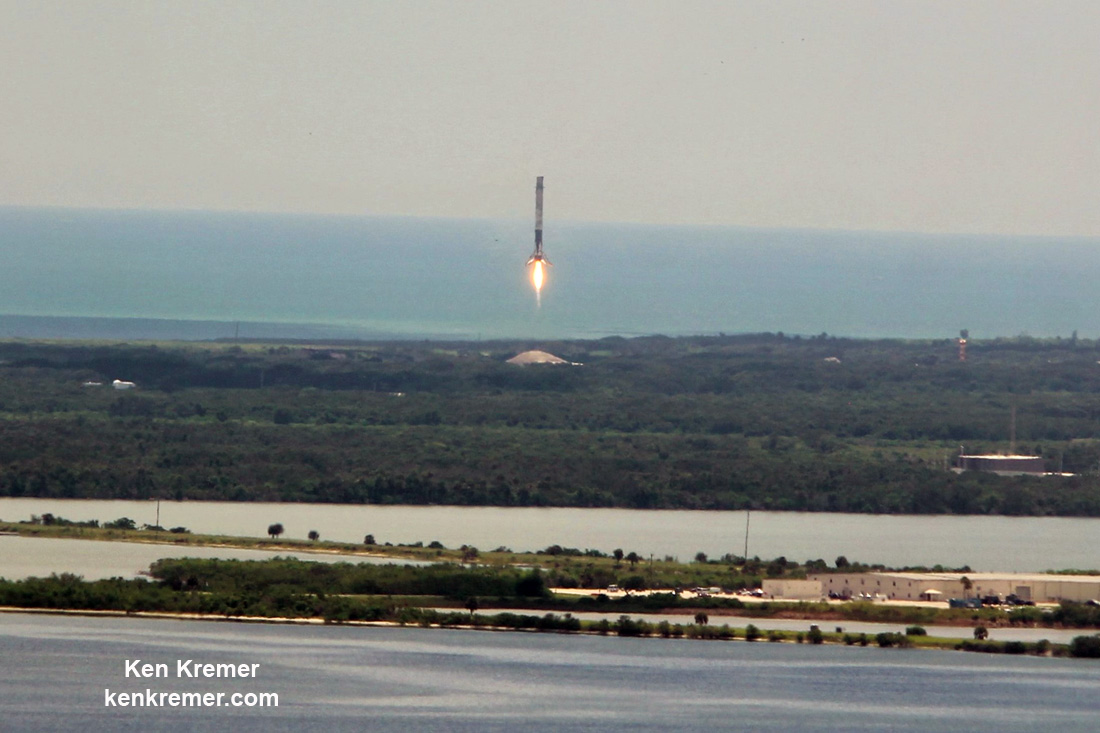
The Dragon resupply ship dubbed Dragon CRS-12 counts as SpaceX’s twelfth contracted commercial resupply services (CRS) mission to the International Space Station for NASA since 2012.
The launch and landing of the SpaceX Falcon 9 booster took place just minutes apart under near perfect weather conditions, as the Dragon capsule sped to the heavens on a mission to the High Frontier of Space.
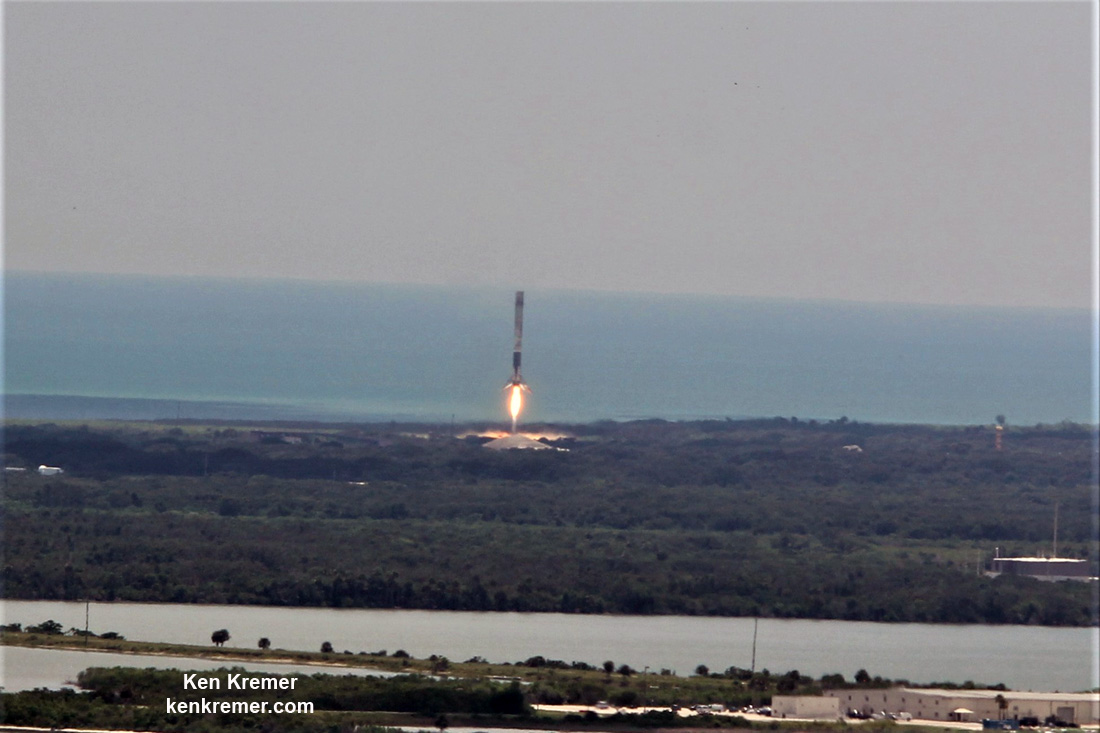
The 22 story Falcon 9 roared off pad 39A on a stream of flames and exhaust into blue skies decorated with artfully spaced wispy clouds that enhanced the viewing experience as the rocket accelerated to orbit and on its way to the 6 person multinational crew.
The triple headed sunshine state space spectacular marches forward in barely 4 days with liftoff of NASA’s amazingly insectoid-looking TDRS-M science relay comsat slated for Friday morning Aug. 18 atop a United Launch Alliance (ULA) Atlas V rocket.
Lastly, a week after TDRS-M and just 11 days after the SpaceX Dragon an Orbital ATK Minotaur 4 rocket is due to blastoff just before midnight Aug. 25 and carry the ORS 5 mission to orbit for the U.S. military’s Operationally Responsive Space program. The Minotaur IV utilizes three stages from decommissioned Peacekeeper ICBMs formerly aimed at the Russians and perhaps the North Koreans.
The Total Solar ‘Eclipse Across America’ takes place on Monday, Aug. 21. It’s the first solar eclipse in 99 years that space the continent from coast to coast and will be at least partially visible in all 48 contiguous states!
The 20-foot high, 12-foot-diameter Dragon CRS-12 vessel is carrying more than 6,400 pounds (2,900 kg) of science experiments and research instruments, crew supplies, food water, clothing, hardware, gear and spare parts to the million pound orbiting laboratory complex.
20 mice are also onboard from NASA for the Rodent Research 9 (RR-9) experiment and another dozen from Japanese researchers. This will support more than 80 of the 250 research investigations and experiments being conducted by Expedition 52 and 53 crew members.
Dragon reached its preliminary orbit about 10 minutes later and successfully deployed its life giving solar arrays.
Dragon CRS-12 now begins a 2 day orbital chase of the station via a carefully choreographed series of thruster firings that bring the commercial spacecraft to rendezvous with the space station on Aug. 16.
Dragon will be grappled with the station’s 57.7-foot-long (17.6 meter-long) Canadian-built robotic arm at approximately 7 a.m. EDT on Aug. 16 by astronauts Jack Fischer of NASA and Paolo Nespoli of ESA (European Space Agency). It then will be installed on the Harmony module.
The Dragon spacecraft will spend approximately 35 days attached to the space station, returning to Earth in mid-September with over 3000 pounds of science samples and results gathered over many months from earlier experiments by the station crews.
Dragon CRS-12 is SpaceX’s third contracted resupply mission to launch this year for NASA.
The prior SpaceX cargo ships launched on Feb 19 and June 3, 2017 on the CRS-10 and CRS-11 missions to the space station. CRS-10 is further noteworthy as being the first SpaceX launch of a Falcon 9 from NASA’s historic pad 39A.
A fourth cargo Dragon is likely to launch this year in December on the CRS-13 resupply mission under NASA’s current plans.
SpaceX leased pad 39A from NASA in 2014 and after refurbishments placed the pad back in service this year for the first time since the retirement of the space shuttles in 2011.
Previous launches include 11 Apollo flights, the launch of the unmanned Skylab in 1973, 82 shuttle flights and five SpaceX launches.
Cargo Manifest for CRS-12:
TOTAL CARGO: 6415.4 lbs. / 2910 kg
TOTAL PRESSURIZED CARGO WITH PACKAGING: 3642 lbs. / 1652 kg
• Science Investigations 2019.4 lbs. / 916 kg
• Crew Supplies 485 lbs. / 220 kg
• Vehicle Hardware 747.4 lbs. / 339 kg
• Spacewalk Equipment 66.1 lbs. / 30 kg
• Computer Resources 116.8 lbs. / 53 kg
UNPRESSURIZED 2773.4 lbs. / 1258 kg
• Cosmic-Ray Energetics and Mass (CREAM) 2773.4 lbs. / 1258 kg
The CREAM instrument from the University of Maryland will be stowed for launch inside the Dragon’s unpressurized trunk. Astronauts will use the stations robotic arm to pluck it from the trunk and attach it to a US port on the exposed porch of the Japanese Experiment Module (JEM).
CREAM alone comprises almost half the payload weight.
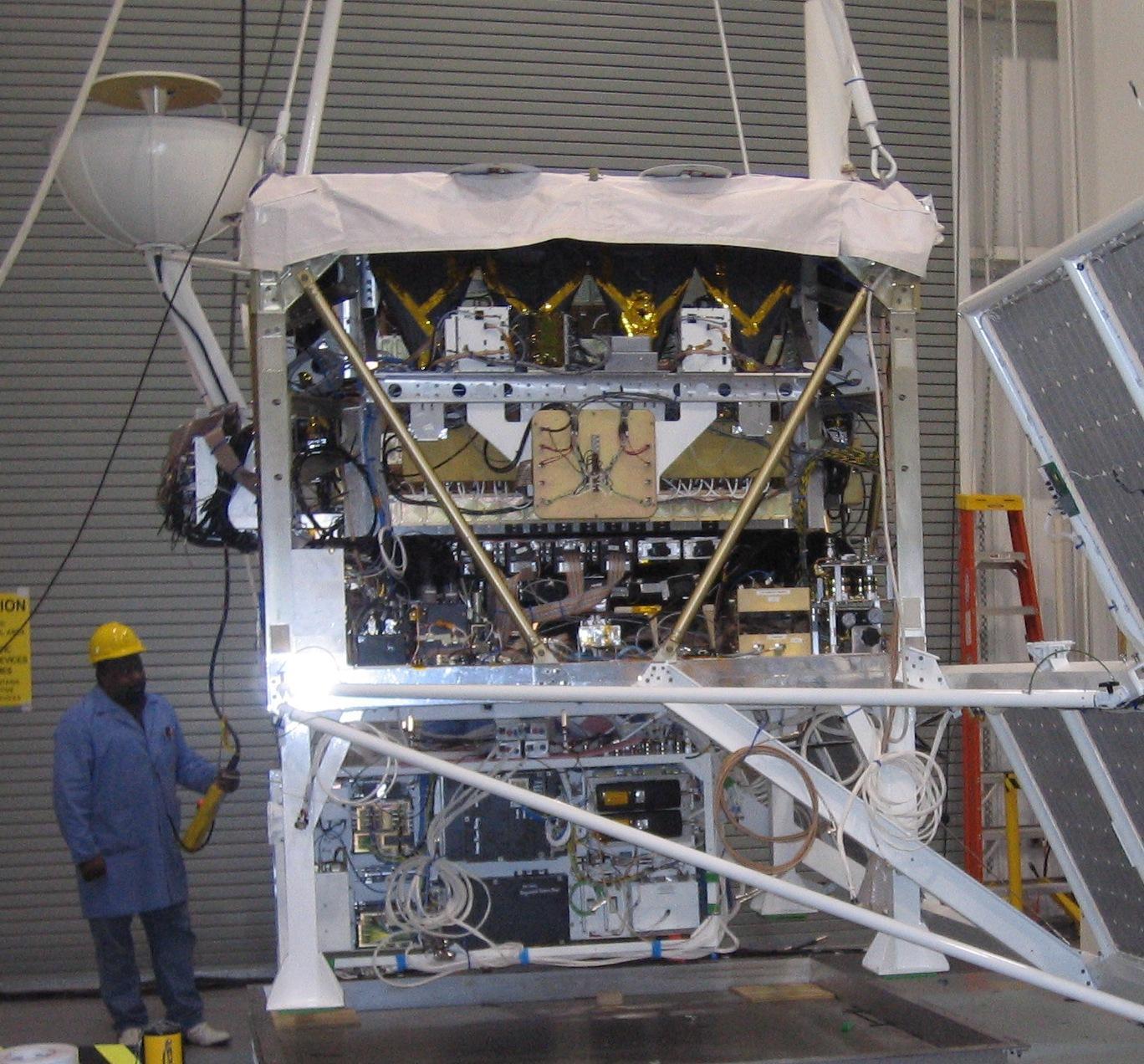
Here is a NASA description of CREAM:
The Cosmic Ray Energetics and Mass (CREAM) instrument will be attached to the Japanese Experiment Module Exposed Facility on the space station, and measure the charges of cosmic rays. The data collected from its three-year mission will address fundamental questions about the origins and histories of cosmic rays, building a stronger understanding of the basic structure of the universe.
The LRRK2 experiment seeks to grow larger crystals of the protein to investigate Parkinson’s disease and help develop new therapies:
Here is a NASA description of LRRK2:
The Dragon’s pressurized area includes an experiment to grow large crystals of leucine-rich repeat kinase 2 (LRRK2), a protein believed to be the greatest genetic contributor to Parkinson’s disease. Gravity keeps Earth-grown versions of this protein too small and too compact to study. This experiment, developed by the Michael J. Fox Foundation, Anatrace and Com-Pac International, will exploit the benefits of microgravity to grow larger, more perfectly-shaped LRRK2 crystals for analysis on Earth. Results from this study could help scientists better understand Parkinson’s and aid in the development of therapies.
Watch this Michael J. Fox video describing the LRRK2 crystallization experiment:
Watch for Ken’s continuing onsite CRS-12, TRDS-M, and ORS 5 and NASA mission reports direct from the Kennedy Space Center and Cape Canaveral Air Force Station, Florida.
Stay tuned here for Ken’s continuing Earth and Planetary science and human spaceflight news.
Ken Kremer
